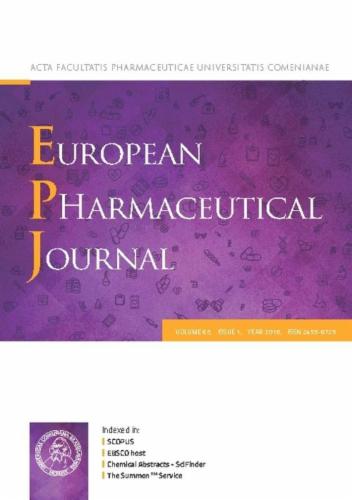Psoriatic skin-sensitive degradable mesoporous zinc phosphate microsphere as a photosensitizer in photodynamic therapy for anti-psoriasis
IF 4.3
3区 医学
Q1 PHARMACOLOGY & PHARMACY
引用次数: 0
Abstract
Blue light will be a promising alternative for photodynamic therapy in psoriasis, but the photosensitizer in vivo remains unexplored. Mesoporous zinc phosphate microparticle (MZP) was synthesized successfully in this study, as evidenced by XPS, XRD, and nitrogen adsorption experiments. Its psoriatic skin-sensitive property was corroborated by SEM and the higher cumulative release rate of that impregnated with curcumin (Cur) and glycyrrhizic acid (GA), namely Cur-GA-MZP, at pH 5.4, which mimic the acidic environment of the inflammatory psoriatic skin. Moreover, by detecting the decrease of absorbance of 1,3-Diphenylisobenzofuran (DPBF) which had been mixed with MZP irradiated by blue light, MZP is confirmed to reinforce ROS along with irradiation time at pH 5.4, rather than that at pH 7.2. This phenomenon led to a strengthened anti-inflammatory effect of MZP on xylene-induced auricle inflammation, as well as on imiquimod-induced psoriatic-like plaques exists only under blue light irradiation, with the alleviated macroscopic and microscopic appearance, decreased IL-17A levels of skin lesion area as well as spleen index. The mechanism is likely attributed to the NFƙB pathway as well as the MAPK pathway detected by western blot. In sum, MZP, which could dissociate at psoriatic skin condition, will be a promising photosensitizer with the prerequisite of blue light as an effective photodynamic therapy for the management of psoriasis.

银屑病皮肤敏感的可降解介孔磷酸锌微球作为光动力治疗银屑病的光敏剂。
蓝光将成为银屑病光动力治疗的一种有前途的替代方法,但体内的光敏剂仍未被探索。通过XPS、XRD和氮气吸附实验,成功合成了介孔磷酸锌微粒(MZP)。扫描电镜证实了其银屑病皮肤敏感特性,并且在pH 5.4下,姜黄素(Cur)和甘草酸(GA) (Cur -GA- mzp)浸渍的累积释放率较高,模拟炎症性银屑病皮肤的酸性环境。此外,通过检测与蓝光照射MZP混合的1,3-二苯基异苯并呋喃(DPBF)的吸光度下降,证实了MZP在pH为5.4时随照射时间的增加而增强ROS,而在pH为7.2时则相反。这一现象导致MZP对二甲苯致耳穴炎症的抗炎作用增强,对仅在蓝光照射下才存在的吡喹莫德致银屑病样斑块的抗炎作用增强,其宏观和微观外观均有所缓解,皮肤病变区域IL-17A水平和脾脏指数均有所降低。其机制可能与NFƙB通路以及western blot检测到的MAPK通路有关。综上所述,MZP可以在银屑病皮肤状态下解离,是一种有前景的光敏剂,以蓝光为前提,作为治疗银屑病的有效光动力疗法。
本文章由计算机程序翻译,如有差异,请以英文原文为准。
求助全文
约1分钟内获得全文
求助全文
来源期刊
CiteScore
9.60
自引率
2.20%
发文量
248
审稿时长
50 days
期刊介绍:
The journal publishes research articles, review articles and scientific commentaries on all aspects of the pharmaceutical sciences with emphasis on conceptual novelty and scientific quality. The Editors welcome articles in this multidisciplinary field, with a focus on topics relevant for drug discovery and development.
More specifically, the Journal publishes reports on medicinal chemistry, pharmacology, drug absorption and metabolism, pharmacokinetics and pharmacodynamics, pharmaceutical and biomedical analysis, drug delivery (including gene delivery), drug targeting, pharmaceutical technology, pharmaceutical biotechnology and clinical drug evaluation. The journal will typically not give priority to manuscripts focusing primarily on organic synthesis, natural products, adaptation of analytical approaches, or discussions pertaining to drug policy making.
Scientific commentaries and review articles are generally by invitation only or by consent of the Editors. Proceedings of scientific meetings may be published as special issues or supplements to the Journal.

 求助内容:
求助内容: 应助结果提醒方式:
应助结果提醒方式:


